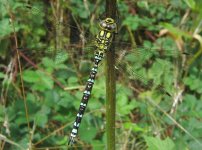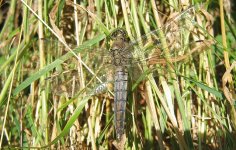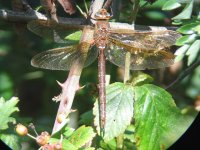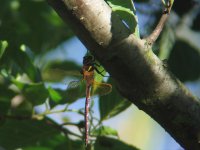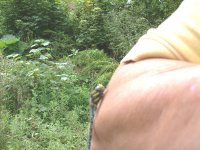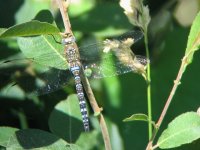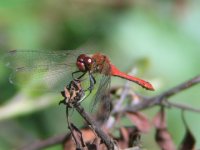The other diagnostic for the Southern Hawker, as opposed to the Common, is the 9th and 10th segments. The Southern has blue stripes across these two segments, while the Common (and migrant) have blue dots.
Interestingly the mature black-tailed clearly shows the outlines of the female/immature male patterns down the abdomen.
Diagnostics for the brown Hawker has to be it's brown and you're not in Norfolk

Seriously the brown wings are the absolutely defining feature. In terms of jizz though, if you can't see the wings - the brown is prone to sudden and abrupt changes of direction, particularly sudden leaps upwards. It also varies its height far more than other hawkers - going from 4ft to 30ft and back, while other species tend to keep to smaller height bands. Also while on patrol on a territory the males tend to glide rather more than others.
Incidently the best way to get a shot of a brown is to find them roosting in the early morning before they're warm enough to fly - look for them about 20-50ft from the water's edge, about 2ft up on any suitable vegetation.





